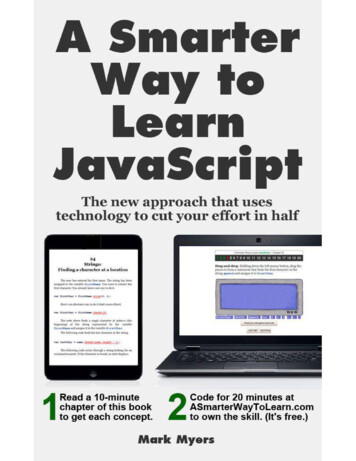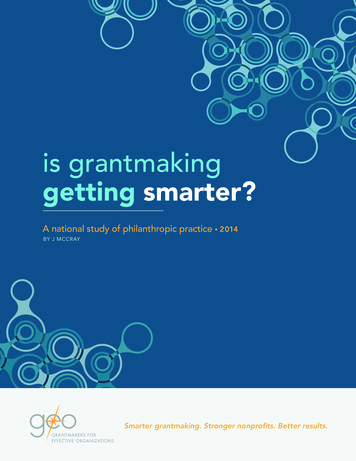
Transcription
is grantmakinggetting smarter?A national study of philanthropic practice 2014BY J MCCRAYSmarter grantmaking. Stronger nonprofits. Better results.
is grantmakinggetting smarter?Grantmakers for Effective Organizations is a diversecommunity of more than 500 grantmakers workingto reshape the way philanthropy operates. Weare committed to advancing smarter grantmakingpractices that enable nonprofits to grow strongerand achieve better results.The GEO community provides grantmakers with the resources and connectionsto build knowledge and improve practice in areas that are most critical tononprofit success. We help grantmakers strengthen relationships with grantees,support nonprofit resilience, use learning for improvement and collaborate forgreater impact. For more information and resources for grantmakers, visitwww.geofunders.org.NONPROFIT TASK FORCEWe are grateful for the assistance of a group of nonprofit leaders who not onlyhelped to inform the design of our 2014 survey but also worked with us tointerpret the results. Many thanks to the following individuals: Francis Afram-Gyening, President and CEO, Care Alliance Health Centerand Alliance for a Better Future, Inc. Karen Avery, Senior Director, Institutional Giving, PBS Foundation Greg Cantori, President and CEO, Maryland Nonprofits Jennifer Chandler, Vice President and Director of Network Supportand Knowledge Sharing, National Council of Nonprofits Dave Coplan, Executive Director, Human Services Center, and Director,Mon Valley Providers Council Don Crocker, Executive Director and CEO, Support Center forNonprofit Management Elizabeth Cushing, President and COO, Playworks Anthony DiFabio, President and CEO, Robins’ Nest, Inc. Hellen Hong, Executive Director, Southern California Region, First Placefor Youth Veronica Nolan, formerly Executive Director, Urban Alliance Gustavo Torres, Executive Director, CASA de Maryland Eric Weinheimer, President and CEO, Donors Forum
2014ADVISORSWe would like to thank the following individuals who provided technical adviceto us as we were developing our survey: Fatima Angeles, Vice President of Programs, The CaliforniaWellness Foundation Ted Chen, Director of Evaluation, Margaret A. Cargill Philanthropies Mary Christian, formerly Program Officer, The Ralph M. Parsons Foundation Michele Rone Cooper, Executive Director, McAuley Ministries September Jarrett, Program Director, Mimi and Peter Haas Fund Chantell Johnson, Director of Evaluation, John D. and CatherineT. MacArthur Foundation Jackie Williams Kaye, Director of Research and Evaluation,Wellspring Advisors, LLC Barbara Kibbe, Director of Organizational Effectiveness, S.D.Bechtel, Jr. Foundation Peter Manzo, President and CEO, United Ways of California Lawrence T. McGill, Vice President for Research, Foundation Center Lynne O’Hara, Executive Director, The Special Hope Foundation Kevin Rafter, Manager, Impact Assesment and Learning, The JamesIrvine Foundation Ehren Reed, Research and Evaluation Officer, Skoll Foundation Lillian Roselin, Executive Director, John Muir/Mt. Diablo CommunityHealth Fund Diana Scearce, Director of Evaluation and Learning, The David and LucilePackard Foundation Amber Slichta, Vice President, Health Foundation for Western and CentralNew York Susan G. Zepeda, President and CEO, Foundation for a Healthy Kentucky Inc.This work is licensed under a Creative Commons Attribution-NonCommercial-ShareAlike 3.0 Unportedlicense. Permissions beyond the scope of this license may be available by contacting 202.898.1840or info@geofunders.org. This publication is available in electronic format at www.geofunders.org.
executive summaryNonprofits take on deep-rooted, systemic issues, often working in an environment that changesrapidly. Grantmakers understand the value of supporting effective, well-led organizations — strongorganizations create meaningful changes in the world.GEO regularly conducts field research to try to understand if grantmaking is getting smarter. In 2011,as the sector was just beginning to recover from the recent recession, our research revealed that:funders saw the struggles nonprofits were facing and used the opportunity to reduce turnaroundtime on grants;unrestricted and capacity-building dollars held steady even though, overall, total grant dollarsdropped dramatically; andmultiyear support became nearly impossible for nonprofits to find.How does funder practice now compare with that of three years ago? There’s some good news.In 2014, we saw marked improvements in:the frequency of multiyear support,the proportion of grants going to general operating support andthe number of funders seeking feedback from grantees.In the lead-up to this research, GEO conducted listening sessions and interviews with nonprofitand foundation leaders. To inform this study, we also convened a task force of nonprofit leaders. Aswe’ve talked with nonprofit and foundation leaders, it is clear that we’re still not where we need to be.Though the philanthropic field is making important headway, there is still so much more we can bedoing to help support strong, adaptable and resilient nonprofit organizations. Nonprofits still don’t havethe resources they need to respond to new opportunities, leadership transitions or changes in theirenvironment. Furthermore, they aren’t so sure their funders are open to talking with them about whatkinds of investments will make their organizations more effective. Interestingly, we found that funderswith more of an “ear to the ground” were far more likely to give capacity-building support as well aslonger-term, multiyear grants.It’s increasingly clear that we’ll only solve the world’s most pressing problems by working together.Many funders are interested in how they can better support collaboration. As a case in point, GEO hasheld three sold-out conferences on topics related to collaboration — including supporting networkeffectiveness, supporting movements and co-funding — in the past three years. Grantmakers reportthe primary reason for collaborating with other funders is to achieve more impact. Funders often expectnonprofits to work together, yet we are not consistently covering the costs of collaboration. We’re alsostill struggling with how to share what we’re learning with others. Grantmakers seem to be missing anopportunity to learn together with nonprofits. While funders tend to conduct evaluation for primarilyinternal purposes, fewer than half of funders share what they’re learning with grantees.It is important to view the results of our research through the lens of the nonprofit leaders whoseek grants from us. We asked four nonprofit leaders to share their stories with us and to tell us howfunder practices have helped to improve their ability to attain the important results they are setting outto achieve.Thank you to everyone who participated in our research. We are making good progress. We are givingmore of the types of support that equip nonprofits to take on complex, deep-rooted problems. Thequestion now is how to accelerate the pace of progress so that all nonprofit leaders get the kind ofsupport they truly need.J McCrayChief Operating Officermccray@geofunders.org1 G R A N T M A K E R S F O R E F F E C T I V E O R G A N I Z AT I O N S 2 0 1 4
introductionAs grantmakers, we hope that nonprofit leaders will dream big. We look for leaders who will takebig risks, who will fight to stem injustice, who will not be satisfied with leaving the world in thestate in which they found it. Supporting these leaders is why we got into this work to begin with.We all know that the past five or six years have not been easy for nonprofits. Still, we might start tofeel some relief at the fact that foundation funding, when adjusted for inflation, is returning to thesame levels as before the recent recession.1 GEO’s recent survey of staffed grantmaking foundationsin the United States revealed that the majority of respondents (61 percent) increased their fundingat least slightly over the past two years. This is good news, right? The short answer is yes, of course,it’s welcome news for any grantseeker. The longer answer is more complicated. Many nonprofitleaders don’t feel that their job has gotten much easier. Why not?Nonprofits operate in an environment where the odds are often stacked against them. Take forexample some of the recent research on the sector, which shows that nonprofit leaders are dealingwith a number of significant challenges: Nonprofits continue to struggle to achieve sustainable business modelsas well as build up reserves to protect themselves during uncertain times.2 Nonprofit organizations have difficulty embedding a culture of fundraisingacross their institutions.3 Nonprofits that rely extensively on government grants deal with delays,cuts in government funding and, in some cases, a dropping indirect costcoverage rate.4 Nearly half of nonprofits rely on loans — the top two reasons: gaps inrevenue and waiting for grants to come in.5 Grantmakers rarely cover the full cost of funded work, including planning,evaluating, reporting and adequate coverage of indirect costs.6Additionally, funders increasingly expect nonprofits to measure and show impact.7 While it isimportant that we understand the impact of the work so we can focus on solutions that work, manynonprofit leaders are faced with measuring impact using already stretched resources. With thisdizzying array of challenges, is it any wonder that financial issues keep so many nonprofit leaders upat night? How can we, as funders, make smarter decisions so nonprofits can dream big and also acton those dreams?1.2.3.4.5.6.7.“Preview of Key Facts on U.S. Foundations: 2014 Edition,” Foundation Center, 2014.“2014 State of the Nonprofit Sector Survey: National Results,” Nonprofit Finance Fund, 2014.Jeanne Bell and Marla Cornelius, “UnderDeveloped: A National Study of Challenges Facing Nonprofit Fundraising,”CompassPoint Nonprofit Services and the Evelyn and Walter Haas, Jr. Fund, 2013.“2014 Survey,” Nonprofit Finance Fund.Ibid.Ibid.IbidIS GRANTMAKING GETTING SMARTER? INTRODUCTION 2
what do we mean bysmarter grantmaking?Over the past 16 years, our research has shown thatgrantmakers can bolster nonprofit results in thefollowing ways:SUPPORT NONPROFIT RESILIENCEGrantmakers enable high-performing nonprofits to focus on long-termmission fulfillment by providing support that is flexible, reliable andenables grantees to build critical skills. This includes general operatingsupport, sometimes known as unrestricted or core support, which allowsan organization to carry out its mission by strengthening organizationalcapacity and sustainability. Grantmakers can also support resilience byoffering multiyear support, provided in the form of grants of two yearsor more without the need to reapply. Capacity-building investments,including those for leadership development, financial capacity oran organization’s ability to evaluate its work, make it possible for anorganization to adapt to changing circumstances, learn what’s workingand be ready to take advantage of new opportunities as they arise.STRENGTHEN RELATIONSHIPS WITH GRANTEESGrantmakers help shape more effective solutions by building relationshipswith grantees based on trust and tapping the knowledge and perspectiveof grantees and community members. Grantmakers may, for example,seek feedback from grantees, invite nonprofit leaders to join advisorycommittees or prioritize people with nonprofit experience for positionson their staff or board.3 G R A N T M A K E R S F O R E F F E C T I V E O R G A N I Z AT I O N S 2 0 1 4
COLLABORATEGrantmakers achieve far greater impact by partnering with otherorganizations in pursuit of common goals and providing grantees withsupport for collaborative efforts. For grantmakers, working collaborativelymeans deepening relationships with partners and putting a commonvision ahead of individual organizations or agendas. Grantmakers can alsoeffectively support grantee collaboration by funding infrastructure thatenables these efforts to thrive, connecting people and groups working incommon areas and emphasizing long-term learning and impactover short-term gains.LEARN FOR IMPROVEMENTGrantmakers use evaluation to continuously learn and improve bypartnering with grantees to collect and share greater insights about whatis or is not working, and why. This means engaging staff, grantees andcommunity members in shaping evaluation efforts, such as developingevaluation goals and metrics that will inform key decisions. It alsorequires sharing learning with others to improve collective knowledge andembracing risk and failureas opportunities for learning.To help us understand whether we aremaking progress in supporting nonprofitsin ways that allow them to be successful,GEO conducts field research to tracktrends in grantmaker practice. In short, wewant to know: is grantmaking gettingsmarter?IS GRANTMAKING GETTING SMARTER? INTRODUCTION 4
PERSPECTIVES FROMnonprofit leadersThe four nonprofit leaders we feature in this report each represent an organizationwith an established track record of doing critical work in its community. For each of theorganizations, grants from foundations and other private institutions are important, butare by no means the sole source of funding.FRANCIS AFRAM-GYENINGPresident and CEO, Care Alliance Health Center andAlliance for a Bright Future, Inc.Most of the clients Francis Afram-Gyening and the team at Care AllianceHealth Center serve are uninsured. Many are homeless. Care AllianceYears as CEO: 7Staff size: 70Annual budget 6.25MYear organizationformed: 1985www.carealliance.orgprovides a range of vital health services to people living in extremepoverty in Cleveland, Ohio, including primary medical care, dental care,behavioral health, care coordination and more. To meet the growingneeds in the community, Care Alliance is in the process of a 15 millioncombined capital and operating campaign to build a new 30,000-squarefoot modern facility. In an effort to provide a more seamless integrationof behavioral and physical health care to its clients, Care Alliance hasalso engaged in a number of collaborations with other organizations inCleveland such as Cleveland Clinic for laboratory services, UniversityHospitals for its family medicine residency program, Center for Familiesand Children, Frontline Service and Beech Brook. Afram-Gyening serveson numerous national and local boards including that of the Saint Luke’sFoundation, a Cleveland-based healthcare conversion foundation, which isalso one of Care Alliance’s funders.ANTHONY DIFABIOPresident and CEO, Robins’ Nest, Inc.Years as CEO: 8Staff size: 273Annual budget: 12.8MYear organizationformed: 1968www.robinsnestinc.orgSpend just a few minutes with Dr. Anthony DiFabio and you’ll discoverthat he is deeply committed to providing evidence-based services to Robins’Nest’s clients. Research-backed practices give clients and their families theconfidence to know that the treatments they are receiving have workedeffectively for other children who have been through similar situations. Forthe past seven years, DiFabio has been the president and CEO of Robins’Nest, which works with children and families to overcome significant lifeobstacles such as trauma, abuse, neglect or homelessness, and helps themrebuild their lives through services such as group homes and counseling.DiFabio’s team manages more than 40 programs at 15 properties across NewJersey’s southern seven counties. The vast majority of funding that Robins’Nest receives is highly restricted public contract funding.5 G R A N T M A K E R S F O R E F F E C T I V E O R G A N I Z AT I O N S 2 0 1 4
DAVE COPLANExecutive Director, Human Services Center, andDirector, Mon Valley Providers CouncilYears as ED: 10Staff size: 10 full time,10 – 15 part timeAnnual budget: 1.2MYear organizationformed: 1982www.hscc-mvpc.orgStudents in Professor Dave Coplan’s course on fundraising at theUniversity of Pittsburgh learn from a nonprofit leader with deep rootsin the human services sector. Coplan started at the Human ServicesCenter as a student intern in the early 1990s. He now leads the Center,which runs a facility that houses multiple agencies that provide directhuman services to residents of the Mon Valley in western Pennsylvania.Among the organizations it houses are a senior center, childcare provider,alternative school and mental health agency. Currently, the Center servesapproximately 750 people every day. In addition to leading the Center,Coplan directs the Mon Valley Providers Council, which helps humanservices providers to identify gaps in services, share information andresources, and organize collective action on issues of common concern.ANGELICA SALASExecutive Director, Coalition for Humane ImmigrantRights of Los AngelesYears as ED: 15Staff size: 41 fulltime, 2 part timeAnnual budget: 2.97MYear organizationformed: 1986www.chirla.orgAngelica Salas knows that to make significant progress on immigrant rights,you can’t go it alone. CHIRLA is a collaborative of advocacy groups, socialservice providers, policymakers and legal service organizations workingtogether to ensure the human and civil rights of immigrants and refugeesin Los Angeles. Under her leadership, CHIRLA shifted from primarilysupporting just the social service providers in the area to providingimmigrants with a platform and the tools to advocate on their own behalf.Two of the issues that Salas helped to spearhead were winning in-statetuition for undocumented immigrant students and efforts to allow allCalifornia drivers to obtain a driver’s license. CHIRLA has been very activeon the national stage as well. Salas is the co-chair of the Fair ImmigrationReform Movement, a collaborative of 33 organizations. CHIRLA alsoparticipates in the National Partnership for New Americans, a coalition of12 of the largest regional and statewide immigrant advocacy organizations.CHIRLA and its partners across the country built the foundation for therecent growth in activism on immigrant rights issues.IS GRANTMAKING GETTING SMARTER? INTRODUCTION 6
KEY FINDINGSsupporting resilientnonprofitsGrantmakers say it is very important to provide support thatwill strengthen grantee organizations so they can achievegreater impactNearly three-quarters (74 percent) of grantmakers in our survey said it is very important to providesupport that will strengthen grantee organizations so they can achieve greater impact. While we stillhave a long way to go in providing the types of support that nonprofit leaders say they need most,our survey shows that grantmakers are making important progress in a few critical areas.General operating support is on the rise after years of remaining staticMedian percentageof grant dollarsawarded to generaloperating support20%20%25%200820112014It is promising that 81 percent of funders report giving some operating support grants. Of annualgrants budgets, a median of 25 percent of grant dollars are in the form of unrestricted support. Thisincrease in operating support, which had held stubbornly at around 20 percent of grantmakingbudgets, is tremendously encouraging. Considering that annual foundation grantmaking wasestimated at 54.7 billion in 2013,8 an increase of 5 percent represents a significant rise in flexiblefunding entering the nonprofit sector.Multiyear support is making a comeback: Most funders now givemultiyear grantsFrequency with which funders offer multiyear s9%18%“Preview of Key Facts,” Foundation Center.7 G R A N T M A K E R S F O R E F F E C T I V E O R G A N I Z AT I O N S 2 0 1 4201124%Almost Always / AlwaysPercentages may not add to 100 percent due to rounding.8.20145%32%Often10%4%2008
In the midst of the recent recession, faced with uncertainty about the performance of theirendowments, many funders responded by drastically cutting back on long-term support. If youwere a grantseeker back then, you would have been hard pressed to find a funder willing toguarantee any level of support beyond the next 12 months. In hindsight, this was a missedopportunity for funders. Multiyear support shouldn’t be a fair weather practice. In tough times,nonprofits need this stability more than ever. Long-term support allows nonprofits to plan withconfidence and reduces the amount of time they have to spend applying for and reporting on grants.Unlike most nonprofits, many grantmakers have the financial resources to weather tough economictimes. In our 2014 survey, we saw important increases in the frequency of multiyear support — thefield is now back at prerecession levels. More than half of funders (58 percent) now give multiyearsupport at least sometimes.More than a quarter of funders increased the types of support mostcommonly associated with nonprofit successIncreasedDid NotChangeTotal dollars formultiyear awards31%40%Total dollars for generaloperating support27%52%Total dollars for granteecapacity building27%51%ReducedDid Not Offer9%20%8%6%13%16%As endowments and foundation giving rebounded, more than a quarter of funders said they increaseddollars for the three types of support that help build resilient nonprofits – general operating, multiyearand capacity-building support.IS GRANTMAKING GETTING SMARTER? SUPPORTING RESILIENT NONPROFITS 8
PERSPECTIVESsupporting resilient nonprofitsANGELICA SALASCoalition for Humane Immigrant Rightsof Los Angeles“More and more of our funders have moved to general support.They are really invested in our mission. With a changing politicalenvironment, this allows us to be flexible in our engagement.These political opportunities are a moment for us to gain realmomentum. Several of these grants are also multiyear.Long-term funding allows us to leverage additional dollarsbecause it increases our credibility, which means we can parlaythat into additional support moving forward.”DAVE COPLANHuman Services Center and Mon ValleyProviders Council“Time is our most precious commodity. There are only so manyworkable hours in a week. Multiyear support gives a small agencylike ours the ability to focus on our programs and what happensfor people. Longer-term grants also communicate that you’restable and worth investing in. If you go to a potential fundingpartner and you say you’ve only got a one-year grant, what theyhear is that you might not be here in a year. When you have athree-year grant, a potential funder knows the core part of theprogram is stable and they’re more likely to support you. Peoplewant to play with a winner. A one-off grant doesn’t communicatewinner. That’s what those longer-term commitments help to do.”9 G R A N T M A K E R S F O R E F F E C T I V E O R G A N I Z AT I O N S 2 0 1 4
BELEN VARGASVice President of Programs, Weingart Foundation“Our point of view is that everything we do asa grantmaker should be aimed at one thing:strengthening the capacity and sustainabilityof grantees.”Belen Vargas started her career in nonprofit legal services, advocatingon policy matters such as women’s issues and school inclusion issues forchildren with disabilities. In 2000, she joined the Weingart Foundationas the foundation’s first Program Associate, focused on managing thefoundation’s small grants program. She is now the foundation’s VicePresident of Programs. The Weingart Foundation supports organizationsacross six Southern California counties, with a focus on health, humanservices and education. In January 2009, Vargas and her colleaguesconcluded a process that led to amending the foundation’s grantguidelines to move from mostly funding grantee programs to offeringunrestricted general operating support (which they call “core support”).This decision followed a significant amount of study, discussions withnonprofit representatives and conversations among the foundation’s boardand staff about the role that unrestricted funding can play in buildingnonprofit capacity and sustainability. Initially, the Weingart Foundationplanned to phase in its core support for grantees over a number of years.According to Vargas, with the start of the Great Recession in 2008 thefoundation saw grantees facing serious challenges as they struggled tomaintain and sustain core programs. As a result, the foundation decidedto make core support the focal point of its grantmaking immediately. “Wedecided right then and there that providing core support was the bestway we could help build our grantees’ capacity and sustainability,” Vargassaid. During site visits and post-grant conversations, grantees shared withWeingart staff that they are grateful to have flexible, unrestricted dollarsthat they can use to invest in their organization, since most grants fromother funders are restricted to programs.IS GRANTMAKING GETTING SMARTER? SUPPORTING RESILIENT NONPROFITS 10
KEY FINDINGSstrengthening relationshipswith granteesThe relationship is changingThe traditional relationship between funders and grantees has come into question in recent years,challenging funders and nonprofits to rethink how they have historically communicated witheach other. For a number of years, the Center for Effective Philanthropy has promoted the use ofgrantee feedback through its Grantee Perception Report. Recently created Yelp-like sites such asInside Philanthropy and the National Committee for Responsive Philanthropy’s Philamplify projectprovide an opportunity for grantees and community members to comment on their experienceworking with certain funders. At the same time, there are calls from within philanthropy by somefoundation leaders for funders to be more transparent and to more clearly communicate their goalsand objectives to grantees.Transparency is important, but it isn’t enough. According to the Center for Effective Philanthropy,only half of nonprofits believe that grantmakers are aware of their challenges.9 Some of thechallenges they named were the increased demand for programs and services, technology andleadership development. To make sure we understand these challenges, funders need to think abouthow to strengthen relationships with grantees. It’s about the following: Building trust — How funders set the stage is critical. If something wefund works fabulously, there’s no question we’ll hear about it. However, ifsomething goes awry and we haven’t taken steps to lay a foundation oftrust, chances are we’ll never learn that something didn’t go as planned. Finding solutions that work — When we engage nonprofit leaders andother community members in decision-making, we are much more likely tofind solutions that will work in the communities we seek to serve. Discovering what nonprofits need — By asking for feedback and listeninghard, we will hear about the kinds of support nonprofits need from us tobe able to make progress on the issues we all care about.Results from our survey suggest that funders are increasingly seeking feedback from grantees as wellas creating other opportunities for grantees to inform grantmaker strategy and practice.9.Ellie Buteau, et al., “Nonprofit Challenges: What Foundations Can Do,” The Center forEffective Philanthropy, 2013.1 1 G R A N T M A K E R S F O R E F F E C T I V E O R G A N I Z AT I O N S 2 0 1 4
Most funders ask grantees for feedbackAsking for feedback from grantees is a critical wayfor grantmakers to gather insights on what is or isnot working. It is encouraging that the majority ofgrantmakers (53 percent) now regularly solicit feedbackfrom grantees. Both anonymous and non-anonymous(attributed) feedback levels are on the rise. About a third(34 percent) of grantmakers solicit data anonymously and38 percent solicit it in a way that can be attributed. Bothapproaches have roughly doubled in frequency since westarted tracking them more than a decade ago. In 2003,18 percent sought anonymous feedback and 21 percentsought non-anonymous feedback.Percentage of funders whosolicit feedback from grantees201453%201144%200836%Additionally, we are seeing an increase in other forms of inputinto grantmaker strategy, practice and decision-making.The majority of funders seek grantee input to help shape policies,practices, program areas and strategy100%90%80%Top line: Sought external input onfoundation strategy from representativesof recipient communities or grantees70%60%50%40%30%20%10%0%63%52%52%42%Bottom line: Sought advice from agrantee advisory committee aboutpolicies, practices, or program areas20112014Funders responding Sometimes, Often or AlwaysI S G R A N T M A K I N G G E T T I N G S M A R T E R ? S T R E N G T H E N I N G R E L AT I O N S H I P S 1 2
However, nonprofits don’t feel that funders are willing to talk withthem about key financial issuesAre foundations open to dialogue about key financial issues?Nonprofit and foundation leaders disagreeNFF 2014 SurveyOverall, do you feel the majority of your individual,corporate, and foundation funders are willing to engage inopen dialogue on funding for any of the purposes below?53%32%20%19%9%11%GEO 2014 SurveyOverall, are you willing to engage in opendialogue with nonprofits regarding funding for .?85%70%65%ExpandingprogramsGeneral operatingsupportMultiyearfunding51%Acquiring orrenovating afacility47%40%Flexiblecapital forchange/growthWorking capital(cash flowneeds)According to research conducted by Nonprofit Finance Fund, more than half of nonprofits reporthaving only three months or less of cash on hand, and more than a quarter (28 percent) ended lastyear with a deficit.10 Lest we be tempted to chalk this up to bad financial management, the realityis that many nonprofits operate in an environment where restrictions on private and governmentfunding make it nearly impossible to cover the full cost of doing business, let alone build upthe reserves necessary to provide a cushion. It is extremely difficult for nonprofits to start theseconversations with funders because of the fear of making a misst
Grantmakers for Effective Organizations is a diverse community of more than 500 grantmakers working to reshape the way philanthropy operates. We are committed to advancing smarter grantmaking practices that enable nonprofits to grow stronger and achieve better results. The GEO community provides grantmakers with the resources and connections
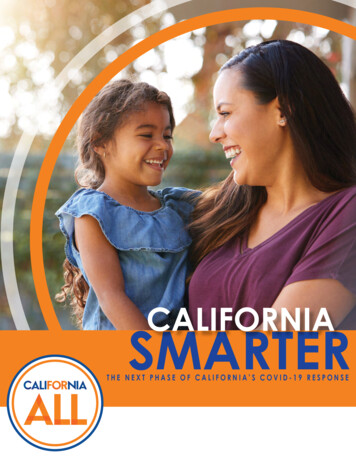
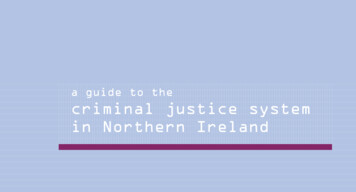
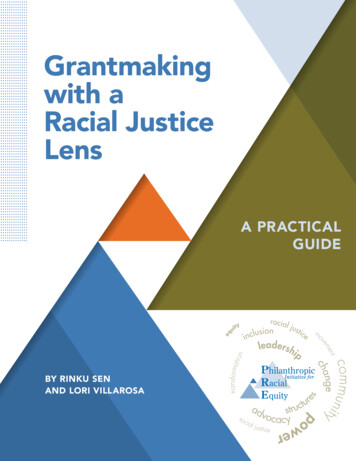
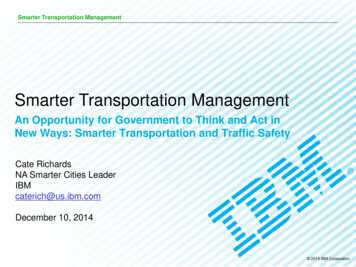

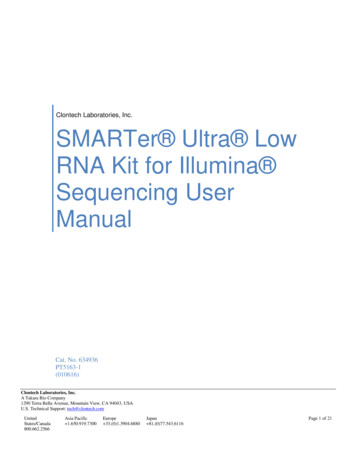
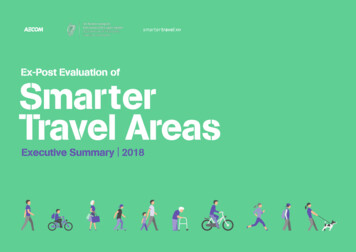


![Smarter Battery Crack [2022-Latest]](/img/13/eliamari.jpg)
